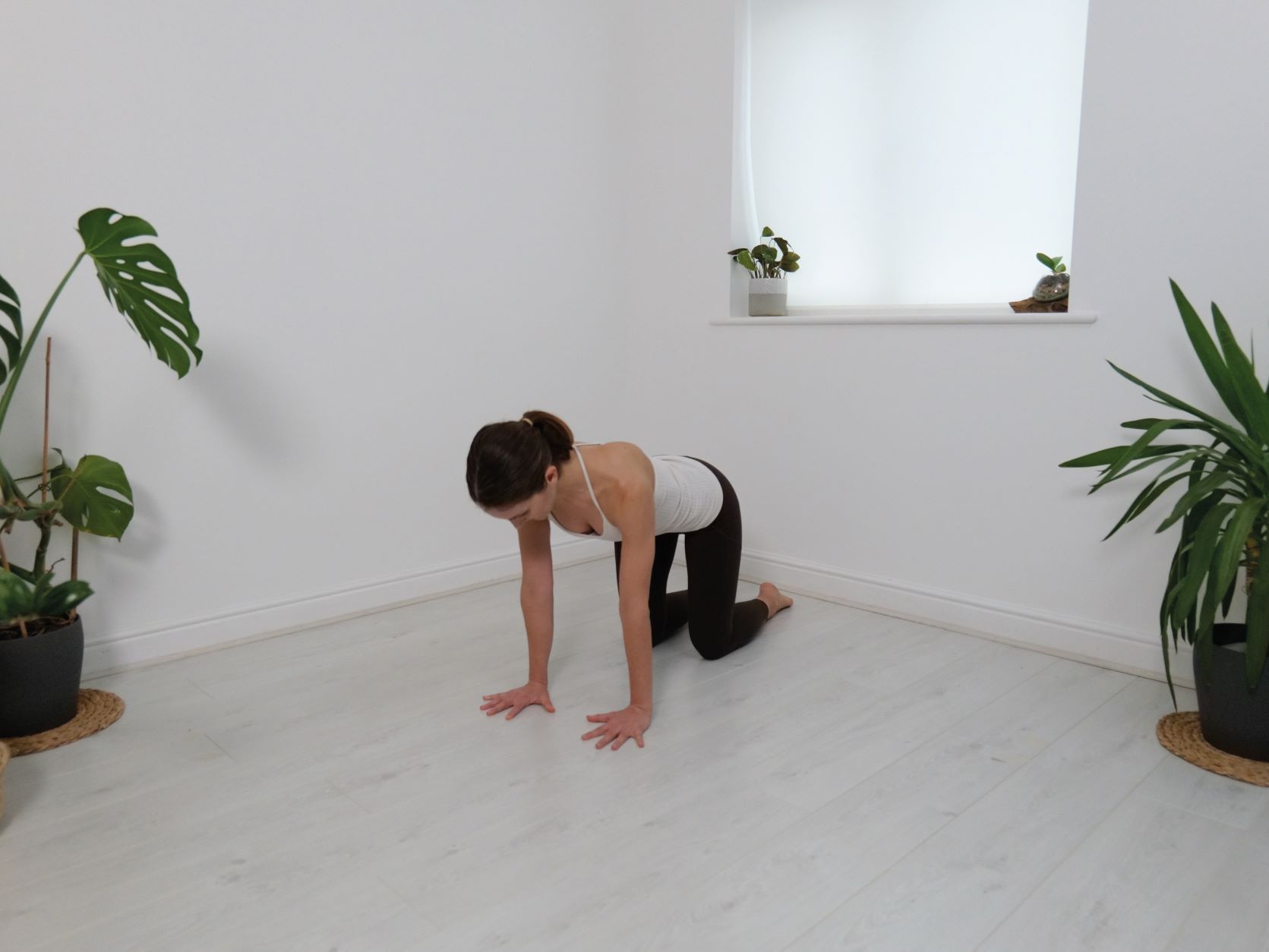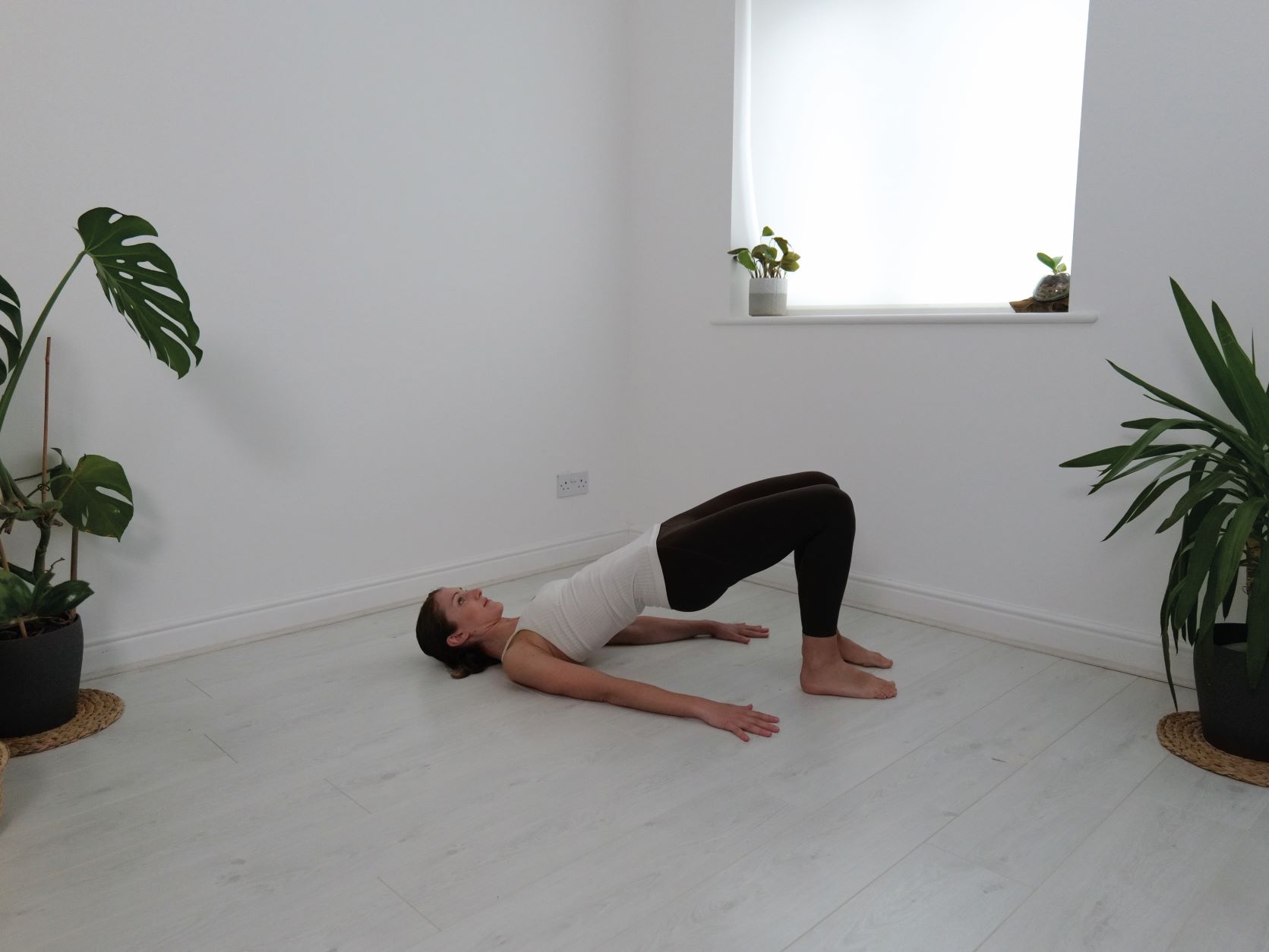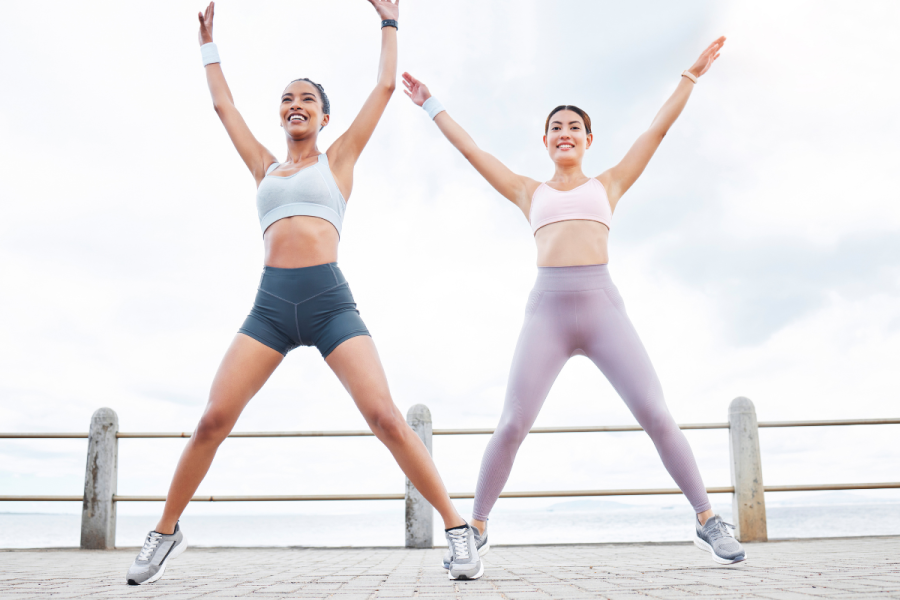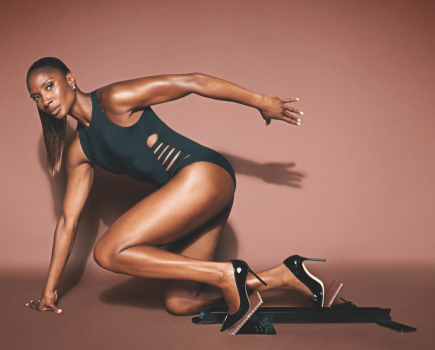
Movement specialist Vanessa Michielon
This week is Stress Awareness Week, and one simple but key way to help fight the signs of stress is regular movement. Here, movement specialist Vanessa Michielon shares a simple stress relief workout routine, featuring key exercises designed to ease anxiety and make you feel more resilient…
When it comes to dealing with anxiety, you may think the only way to ease your mind is to sit in the lotus position meditating, or resting in the yoga position called child’s pose. While increasing numbers of studies suggest that slow forms of yoga and conscious breathing do help when it comes to reducing anxiety disorders, these are not the only mindful movement practices you can do to help yourself.
For some people, a balanced and varied workout programme that includes calming but also stimulating activities and exercises can be a more effective strategy for reducing symptoms of anxiety and improving resilience to stress.
For instance, being still and focusing inwards can be extremely challenging for an anxious mind. This is because rumination might arise and create even more discomfort. In this case, a vigorous workout can be beneficial to start with, especially if you experience anxiety as restlessness.
Also, when performed within a safe range, physically challenging activities that elevate your heartrate help you associate a state of high activation with excitement and joy (the safe state of the sympathetic nervous system), rather than fear and anxiety (the sympathetic nervous system under threat). Furthermore, muscle contractions produce something called myokines, which contribute to reducing the symptoms of anxiety and depression.
How movement and exercise aid stress relief
With my 500 plus hours of yoga teacher training, added to my advanced Pilates, barre and dance training specialising in movement for mental health, I founded a new modality called Transformative Movement Method (TMM). The movements are designed to equip people to gain improved physical health and a balanced state of mind, thanks to both energising and relaxing movements. The different forms of movement include…
RESTORE
These movements nourish with deep breathing and stretching, slow movements and meditations from yin yoga and somatics. The goals is to help down-regulate an overly stimulated nervous system to feel safe, relaxed and centred.
FLOW
These movements open the body and shift you from a survival to a creative state, through circular movements inspired by vinyasa yoga and contemporary dance. They’re designed to help you trust your intuition and feel more receptive and harmonious.
EMPOWER
These movements challenge your muscles with intense, technical Pilates and mobility-based sequences. They help you connect to your centre of power to build physical and mental resilience.
RELEASE
These lift the heart and boost vitality if you’re in a negative downward-thinking spiral. The blend of dance, agility drills and barre moves builds up a sweat and also helps shake off repressed frustration and sense of stagnancy.
Stress relief workout: 8 exercises to try
This following stress relief workout sequence features key exercises designed to help you train your nervous system to swing harmoniously and healthily between activated and relaxed states, and to respond better to stress. Some of these practices stimulate the vagus nerve – the winding nerve that runs from your brain down to your intestines, and which is key in regulating your nervous system – while others safely increase your resilience, or induce relaxation.
Always make sure you listen to the sensations in your body and notice what feels good throughout the workout. If anything feels painful physically or triggers anything emotionally, gently back off and choose a different movement. The more you practice, the more you can learn how to use the right tools in a compassionate way.


EXPANDING AND CONTRACTING
How it helps: This move teaches your body to harmoniously shift between the feelings of containment and safety as you hug yourself, to courage and confidence as you stretch out. It gently stimulates the vagus nerve by opening the chest and throat.
- With a wide stance, gently breathe in and open your arms, expanding your chest as if you wanted to stretch your whole body into an X shape.
- Then, breathe out and soften your knees, hugging yourself and releasing the weight of your head, making yourself smaller.
- Repeat this pulsation to your own rhythm, feeling the movement of your arms and legs radiating from the centre of your body.


ARMS SWINGING AND SHIFTING WEIGHT
How it helps: This move calms some of the stress circuits through the optical flow – the apparent movement of the objects around you as you walk and shift your position in space. It releases tension from your shoulders, safely lifting your energy up and improving your mood.
- Stand with your feet wider than your hips and with soft knees.
- Next, shift your weight to one foot and swing your arms in the same direction, then swing in the opposite direction as if you wanted to throw something. Choose the pace and range of motion that feels right for you.
- Keep your shoulders, spine and arms loose and allow your eyes to take in as much information as possible.
- After 2-5 mins, reset to centre.


SHAKING
How it helps: This helps get rid of excess energy, so you feel relief from hyper-arousal and settle into stillness more easily. It mimics the mechanism your body uses to discharge stress. Think of a gazelle shaking tension out after successfully escaping a predator.
- Standing with your feet slightly wider than your hips, gently bounce up and down through your knees and ankles, allowing the vibration to resonate in your whole body.
- Choose the range of movement and speed that feels right for you. The purpose is to loosen up your joints, shake off tension and feel your weight nicely dropping towards the ground.
- Do this for 2-5 mins. End by returning to stillness and placing your hands on your chest and belly, noticing how your breath slows down and recovers.

FULL SALAMANDER
How it helps: This move tones your vagus nerve. It’s very grounding and helps create a connection between the Earth and your body, which is often weakened when you are anxious.
- From a tabletop position, on your hands and knees, look over to your right and let your right ear move towards your right shoulder.
- Let the bend in your side continue to involve your whole spine.
- Hold for about 30-60 secs, then return to centre and repeat on the other side.
- Do five on each side.


ALL FOURS BALANCE
How it helps: This helps to build the bridge between the right and left hemispheres of your brain for better control of impulses. It helps refocus your mind when you are overwhelmed with anxious thoughts and activates your core for extra resilience.
- Start in tabletop with your hands under your shoulders and knees under your hips.
- Gently hug your abdominals in and up, and lengthen your spine.
- Lift one knee and the opposite arm sideways and up while maintaining balance, then smoothly and slowly lower back to the ground.
- Repeat the move with the other arm and leg, without moving your shoulders and hips.
- Allow your breath to be slow and full, and keep your gaze on the floor.
- Repeat 5-10 times on each side. Feel free to slow the movement down and hold the position at the top for an extra challenge.


BRIDGE ROLL
How it helps: This soothes your nervous system with slow, repetitive, rhythmic movements mirroring your breath. It helps elongate your breath, shifting you into the parasympathetic part of your nervous system.
- Lying on your back, bend your knees and place your feet hip-width apart.
- Press your heels, arms and shoulders firmly on the ground and progressively lift your hips, lower back, middle back and upper back, as if you were peeling a necklace from the floor.
- Pause at the top then slowly reverse the movement, articulating your spine from the top to the hips to return to the starting position.
- Try to match your breath with the movement, using your whole inhalation to complete the journey in one direction and the whole exhalation to reverse.

NECK STRETCHES
How it helps: This releases tightness from some of the large muscles in your neck, thereby producing a relaxing sensation. When your neck muscles are tense, your body sends “alert” messages to the brain; when they are soft, the body signals you are safe.
- From a comfortable, seated position, rest your right hand on your left ear and allow your head to gently tilt sideways.
- Each time you breathe out, allow the weight of your right elbow to drop deeper and both shoulders to relax more, so you can softly create space between your left ear and right shoulder.
- Hold for about 10 breaths and slowly return to centre.
- Repeat on the other side, always staying in a safe range of 60-80 per cent intensity.

DIAPHRAGMATIC BREATHING
How it helps: This breathing helps increase the vagal tone by mobilising the diaphragm (the muscle at the bottom of your lungs). It slows down and evens out the inhalation and exhalation, decreasing your heart rate and calming your whole body.
- Lying on your back, or sitting with your back against a solid surface, allow your hands to gently cup around your low ribs.
- As you breathe in, feel the bottom of your chest expanding towards your hands. Then, as you breathe out, follow the softening of your chest back to centre.
- If possible, try to count to six as you breathe in and six as you breathe out. Maintain softness in your throat and shoulders.
- Practise this for 5-10 mins, then return to your natural breathing
Vanessa Michielon runs weekly live classes in TMM on her website, vanessamichielon.com, where you can also take part in stress-releasing techniques as part of her free course, Daily Movement Rituals. Also find her at instagram.com/vanessamichielon.








